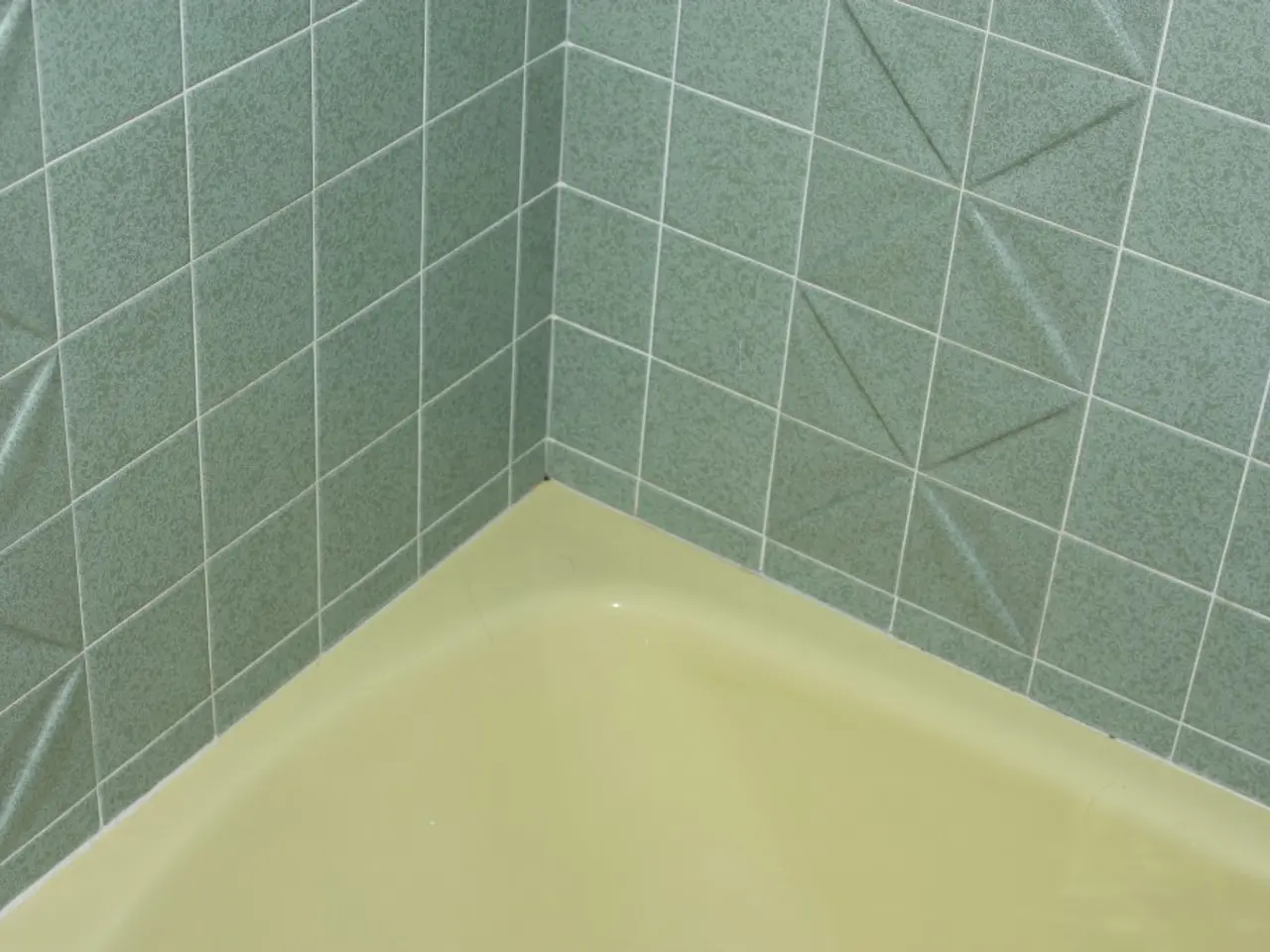Choosing between bathroom paint color or tiles first? Insights from interior designers on a harmonious design sequence
=========================================================
When it comes to designing a bathroom, the choice between choosing tiles first or paint can significantly impact the overall aesthetic and design choices. According to design professionals, the recommended approach for an elevated and cohesive bathroom design is to choose the bathroom tiles first and then select the paint color to complement the tiles.
Tiles often determine the palette and style
A busy or statement tile can inspire the rest of the color scheme, including paint, fixtures, and accessories. By establishing your tile choice first—especially if they have a bold pattern, color, or texture—you create a design foundation on which to base your paint color, ensuring that the colors harmonize effectively.
Paint colors are easier and more affordable to change
Paint is less permanent than tiles, so it's more practical to pick paint after tiles to ensure an exact match or complementary effect. This approach also allows for easier changes in the future, should you wish to update the color scheme.
Sample and test materials
It is highly recommended to source and compare physical samples of both tiles and paint swatches together to see how they interact in your space under natural and artificial lighting before finalizing choices. This will help ensure that the colors and textures complement each other and create the desired effect.
Choosing tile color first helps avoid clashing
Since tile designs can have complex or unique colors, starting there reduces the risk of selecting paint that conflicts or overwhelms the tile pattern. By choosing your tiles first, you can ensure that the paint color complements the tiles and creates a cohesive design.
Exceptions to the rule
While the general consensus leans toward tile-first, there are exceptions. For example, if you have a specific paint color in mind for a desired mood or style, which can then guide tile choice, this approach can be effective.
Additional considerations
If you plan to paint existing tiles, as opposed to selecting new ones, then selecting paint color first would be necessary. Specialized tile paint and varnishes tailored for bathrooms provide this flexibility. For tile installations that include borders or accent tiles, those details will typically influence the primary tile and paint colors you choose afterward for cohesion.
In summary, choosing tiles first is generally best to ground your bathroom design and then coordinating paint colors to create a polished, harmonious look. When doing a DIY, it's advised to request samples of the paint colors, tiles, and any other materials to make sure they work together before committing. Soothing and serene colors are best suited for blues, while reds and browns create a warmer atmosphere. If aiming for a calming and neutral look, earthy tones are suitable.
[1] Design Tips for Choosing Bathroom Tiles First - [Source] [2] Painting Existing Bathroom Tiles - [Source] [3] Borders and Accent Tiles in Bathroom Design - [Source] [4] Cohesive Bathroom Design with Tiles - [Source]
- When it comes to bathroom design, choosing the tiles first allows for a design foundation that inspires the rest of the color scheme, such as paint, creating a cohesive and harmonious look in the home-and-garden setting.
- In contrast, painting the walls after laying tiles enables easier changes in the interior design, making it more accessible for homeowners seeking to update their lifestyle by altering the color scheme of their home-and-garden, particularly the bathroom.




